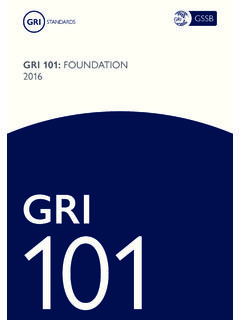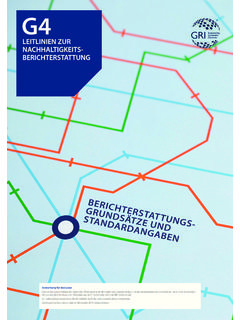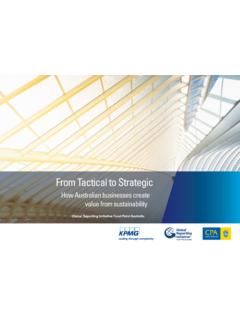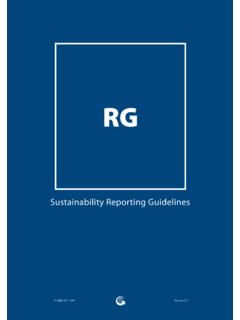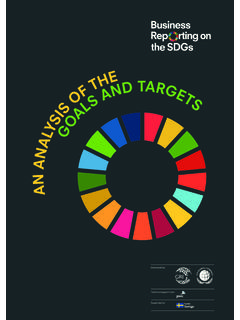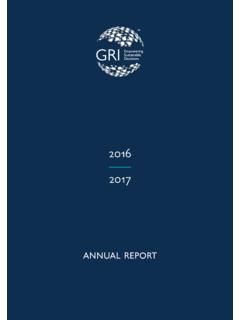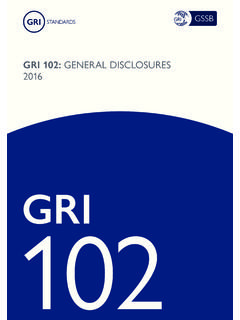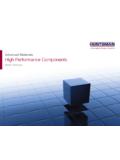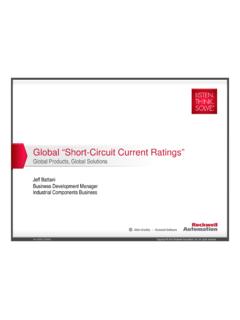Transcription of GRI 103: MANAGEMENT APPROACH 2016
1 gri 103 : MANAGEMENT APPROACH 2016 GRI1032 gri 103 : MANAGEMENT APPROACH 2016 ContentsIntroduction 3 gri 103 : MANAGEMENT APPROACH 5 General requirements for reporting the MANAGEMENT APPROACH 5 Disclosure 103-1 Explanation of the material topic and its Boundary 6 Disclosure 103-2 The MANAGEMENT APPROACH and its components 8 Disclosure 103-3 Evaluation of the MANAGEMENT APPROACH 11 Glossary 12 References 14 ResponsibilityThis Standard is issued by the Global Sustainability standards Board (GSSB). Any feedback on the GRI standards can be submitted to for the consideration of the 103: MANAGEMENT APPROACH sets out reporting requirements about the APPROACH an organization uses to manage a material topic.
2 This Standard can be used by an organization of any size, type, sector or geographic referencesThis Standard is to be used together with the most recent versions of the following 101: Foundation GRI standards GlossaryIn the text of this Standard, terms defined in the Glossary are dateThis Standard is effective for reports or other materials published on or after 1 July 2018. Earlier adoption is this Standard Note: This document includes hyperlinks to other standards . In most browsers, using ctrl + click will open external links in a new browser window.
3 After clicking on a link, use alt + left arrow to return to the previous 103: MANAGEMENT APPROACH 2016A. Overview This Standard is part of the set of GRI Sustainability Reporting standards (GRI standards ). These standards are designed to be used by organizations to report about their impacts on the economy, the environment, and GRI standards are structured as a set of interrelated, modular standards . The full set can be downloaded at There are three universal standards that apply to every organization preparing a sustainability report: GRI 101: FoundationGRI 102: General DisclosuresGRI 103: MANAGEMENT APPROACH An organization then selects from the set of topic-specific GRI standards for reporting on its material topics.
4 These standards are organized into three series: 200 (Economic topics), 300 (Environmental topics) and 400 (Social topics). Each topic Standard includes disclosures specific to that topic, and is designed to be used together with this Standard ( gri 103 : MANAGEMENT APPROACH ), to report the MANAGEMENT APPROACH for the topic. B. Using the GRI standards and making claims There are two basic approaches for using the GRI standards . For each way of using the standards there is a corresponding claim, or statement of use, which an organization is required to include in any published materials.
5 1. The GRI standards can be used as a set to prepare a sustainability report that is in accordance with the standards . There are two options for preparing a report in accordance (Core or Comprehensive), depending on the extent of disclosures included in the report. An organization preparing a report in accordance with the GRI standards uses this Standard, gri 103 : MANAGEMENT APPROACH , to report its MANAGEMENT APPROACH for each material Selected GRI standards , or parts of their content, can also be used to report specific information, without preparing a report in accordance with the standards .
6 Any published materials that use the GRI standards in this way are to include a GRI-referenced 101: Foundation is the starting point for using the GRI standards . It has essential information on how to use and reference the standards . See Section 3 of GRI 101: Foundation for more information on how to use the GRI standards , and the specific claims that organizations are required to include in any published materials. gri 103 GRI 102 Topic-specificStandardsUniversal StandardsStarting point for using the GRI StandardsGRI 101 FoundationGeneral DisclosuresManagement ApproachTo report contextual information about an organizationTo report the MANAGEMENT APPROACH for each material topicSelect from these to report specific disclosures for each material topicGRI 300 EnvironmentalGRI 400 SocialGRI 200 EconomicFigure 1 Overview of the set of GRI Standards4 gri 103 : MANAGEMENT APPROACH 2016C.
7 Requirements, recommendations and guidance The GRI standards include: Requirements. These are mandatory instructions. In the text, requirements are presented in bold font and indicated with the word shall . Requirements are to be read in the context of recommendations and guidance; however, an organization is not required to comply with recommendations or guidance in order to claim that a report has been prepared in accordance with the These are cases where a particular course of action is encouraged, but not required. In the text, the word should indicates a recommendation.
8 Guidance. These sections include background information, explanations and examples to help organizations better understand the organization is required to comply with all applicable requirements in order to claim that its report has been prepared in accordance with the GRI standards . See GRI 101: Foundation for more information. D. Background contextManagement APPROACH disclosures enable an organization to explain how it manages the economic, environmental and social impacts related to material topics. This provides narrative information about how the organization identifies, analyzes, and responds to its actual and potential impacts.
9 Disclosure about an organization s MANAGEMENT APPROACH also provides context for the information reported using topic-specific standards (series 200, 300 and 400). This can be especially useful for explaining quantitative information to stakeholders. The reporting requirements in this Standard have a generic form, and can be applied to a wide variety of topics. An organization preparing a report in accordance with the GRI standards is required to report its MANAGEMENT APPROACH for each material topic using this Standard. Topic-specific standards can also contain additional reporting requirements, reporting recommendations and/or guidance for reporting MANAGEMENT APPROACH information about the topic in question.
10 5 gri 103 : MANAGEMENT APPROACH 2016 This Standard includes general requirements and disclosures for reporting the MANAGEMENT APPROACH for material topics. These are set out in the Standard as follows: General requirements for reporting the MANAGEMENT APPROACH Disclosure 103-1 Explanation of the material topic and its Boundary Disclosure 103-2 The MANAGEMENT APPROACH and its components Disclosure 103-3 Evaluation of the MANAGEMENT APPROACH General requirements for reporting the MANAGEMENT approachReporting If MANAGEMENT APPROACH disclosures are combined for a group of material topics, the reporting organization shall state which topics are covered by each If there is no MANAGEMENT APPROACH for a material topic.
